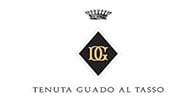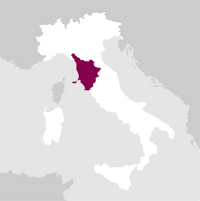Description
Cont’Ugo is produced exclusively from Merlot grapes in order to interpret the territory of Bolgheri from a new perspective.
Details

Perfume

Color

Taste
Serve at:
16 - 18 °C.
Longevity:
10 - 15 years
Decanting time:
1 hour

Pairings
- Start up year: 1934
- Oenologist: Marco Ferrarese
- Bottles produced: 1.644.685
- Hectares: 320
The noble Della Gherardesca family began practicing viticulture in the late 1600’s on their land in Bolgheri, but things really began to change under the guidance of Guido Alberto Della Gherardesca (1780-1854). He was a passionate about viticulture. He was appointed majordomo of Grand Duke Leopold II and then dedicated himself to enology in his family’s land in Maremma. In the 1930’s, the property was inherited by Carlotta Della Gherardesca Antinori (Piero Antinori’s mother) and her sister who was married to Mario Incisa Della Rocchetta (who received the nearby Tenuta San Guido). Read more


| Name | Marchese Antinori Guado al Tasso Bolgheri Cont'Ugo 2023 |
|---|---|
| Type | Red still |
| Denomination | Bolgheri DOC |
| Vintage | 2023 |
| Size | 0,75 l |
| Alcohol content | 14.0% by volume |
| Grape varieties | 100% Merlot |
| Country | Italy |
| Region | Tuscany |
| Vendor | Tenuta Guado al Tasso (Antinori) |
| Origin | Bolgheri (LI). |
| Climate | Altitude: 45-60 m. a.s.l. |
| Fermentation temperature | 86 °Fahrenheit (30 °C) |
| Wine making | The selection of the finest Merlot grapes was made from the over 100 acres (40 hectares) of the variety on the estate. After the hand harvest of the crop and a selection in the cellar, the grapes went into temperature-controlled stainless steel tanks where they fermented and remained in contact with their skins for a period of 20 days. The temperature of the fermentation was handled on the basis of the ripeness level of the grapes: some fermented at somewhat low temperatures to maintain aromatic freshness, others close to 86° Fahrenheit (30° centigrade) to extract body and structuring elements. In this way, different types of Merlot were obtained, each of which then went separately into small oak barrels. |
| Aging | The malolactic fermentation took place in barriques (1/3 of which were new) and was completed by the end of the year. After 8 months of ageing in French oak, the finest lots were blended together and went back into barrel for a further four months of ageing. At the end of this period, the wine was then bottled and given a final six months of bottle ageing before commercial release. |
| Allergens | Contains sulphites |





